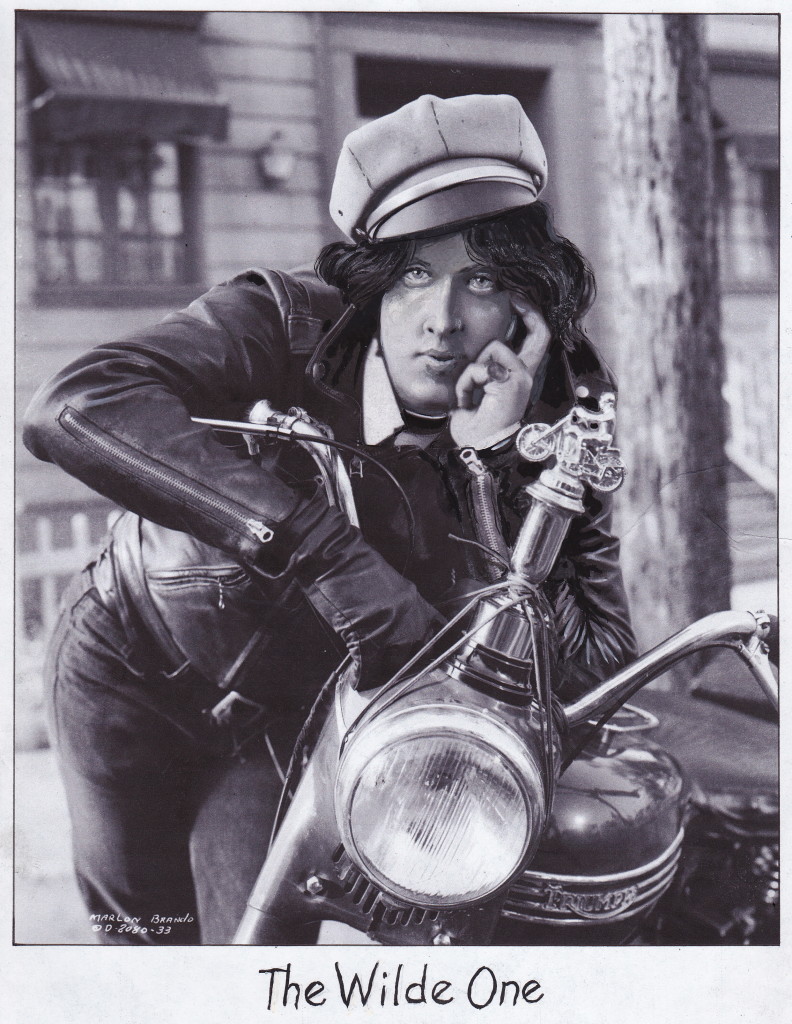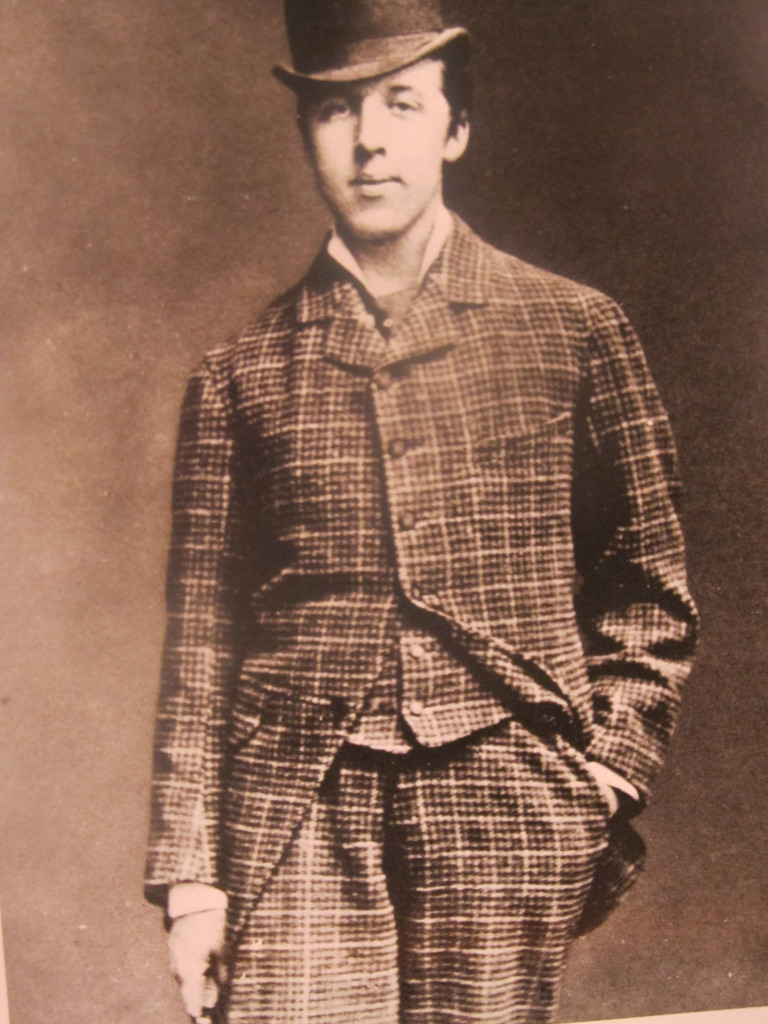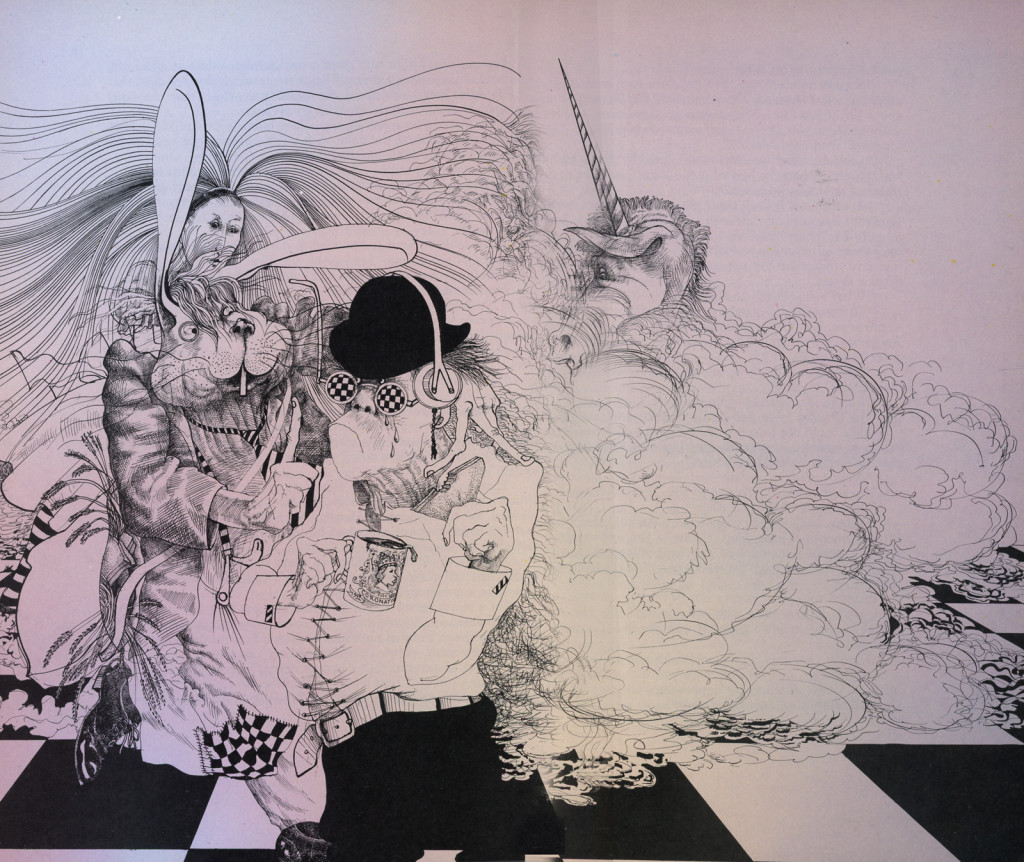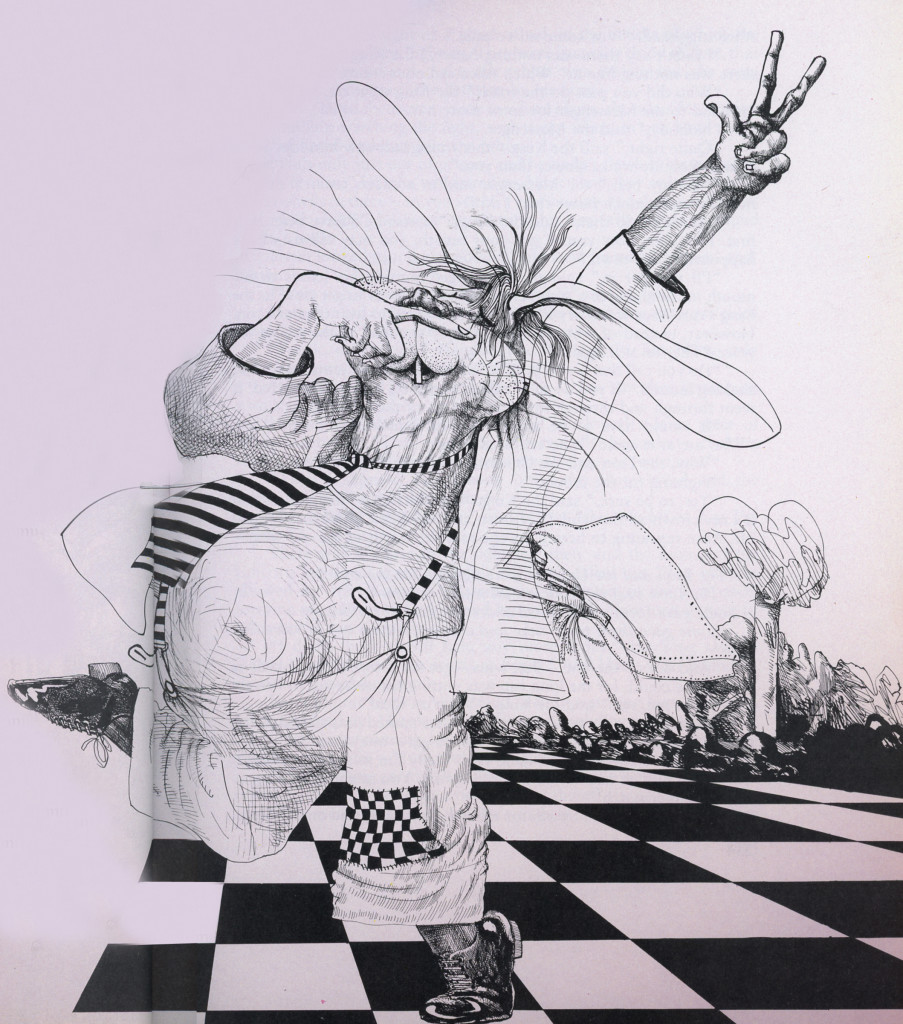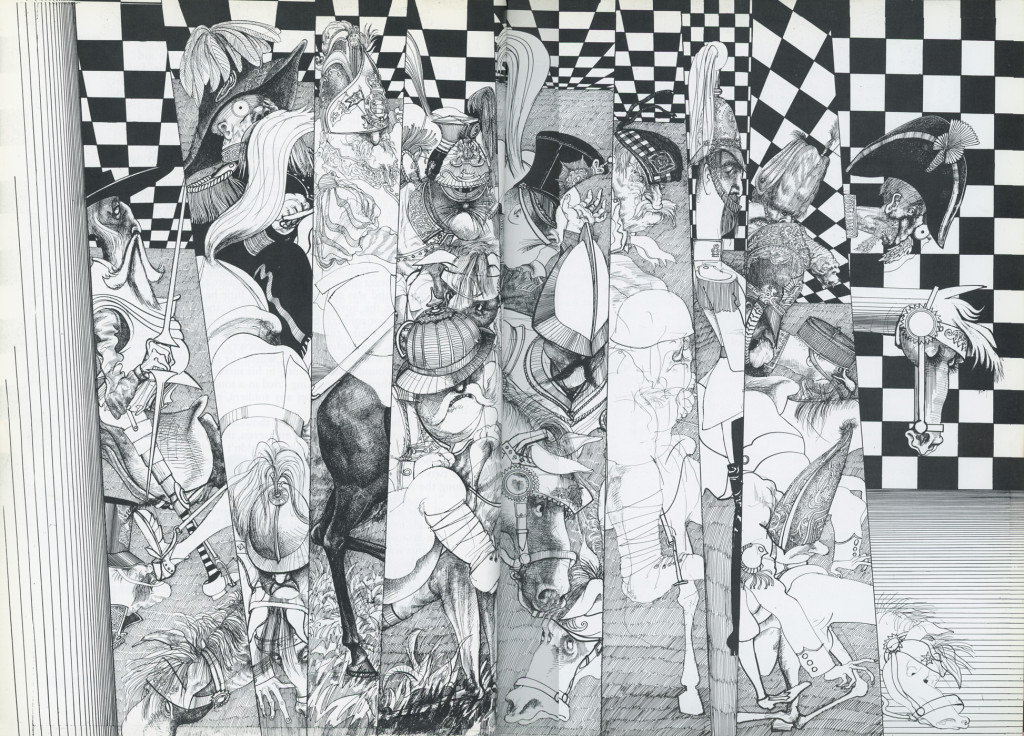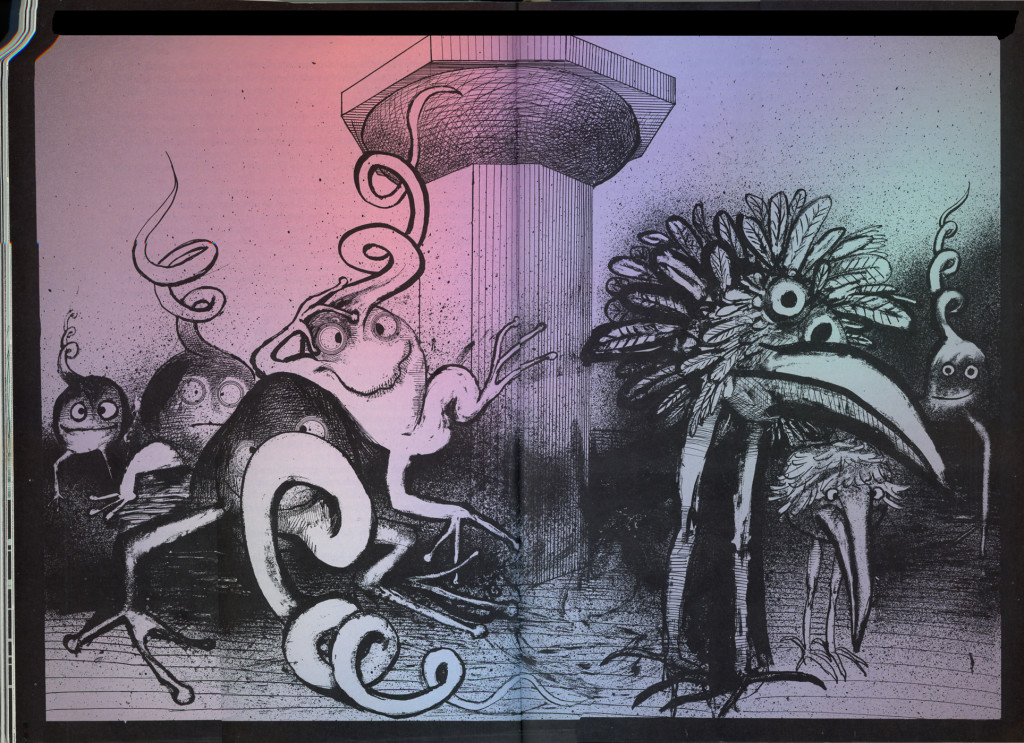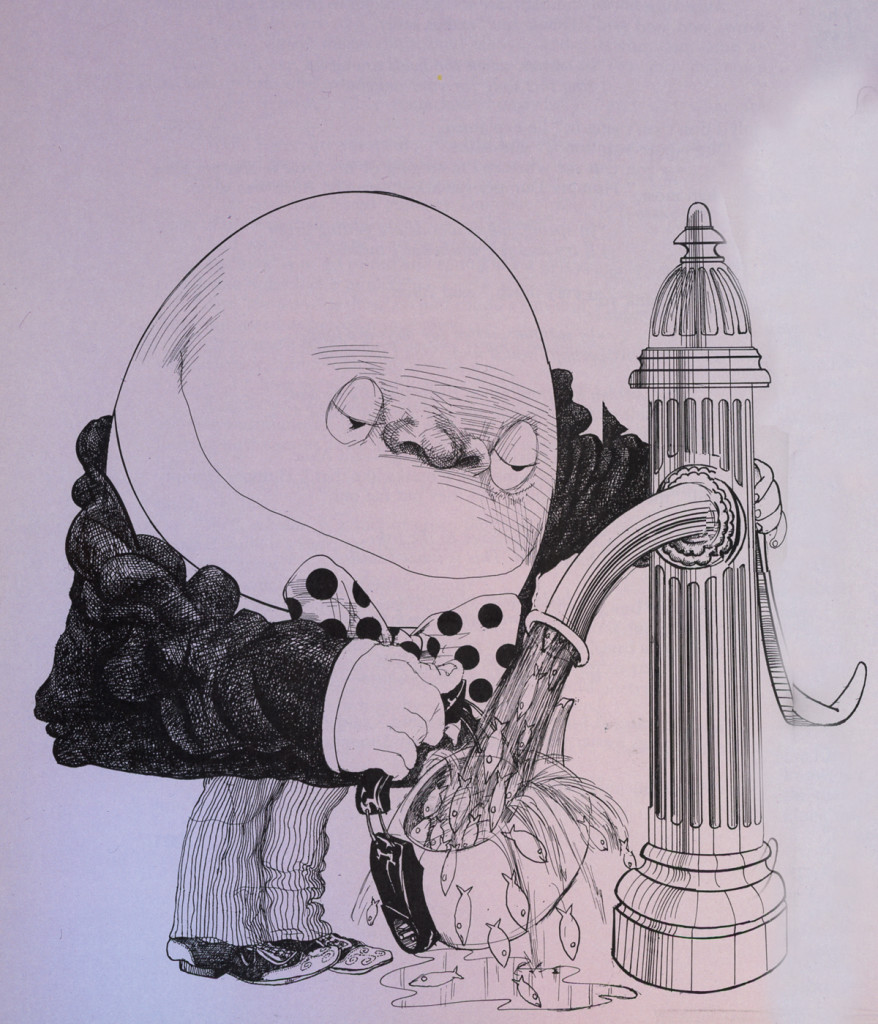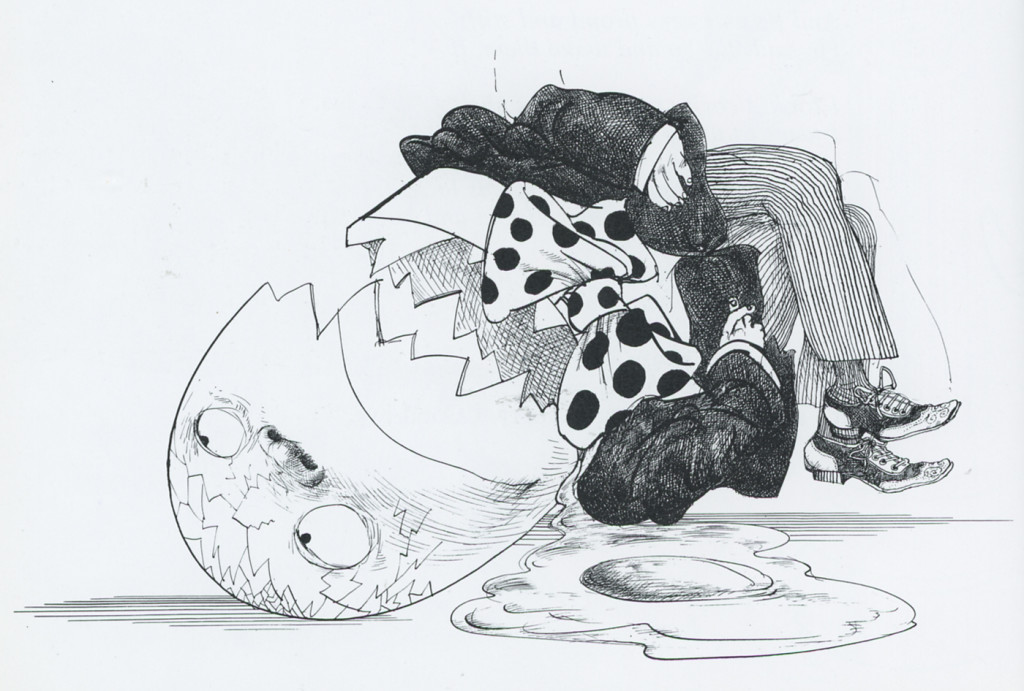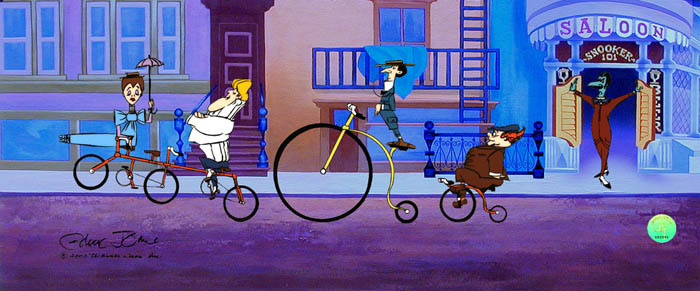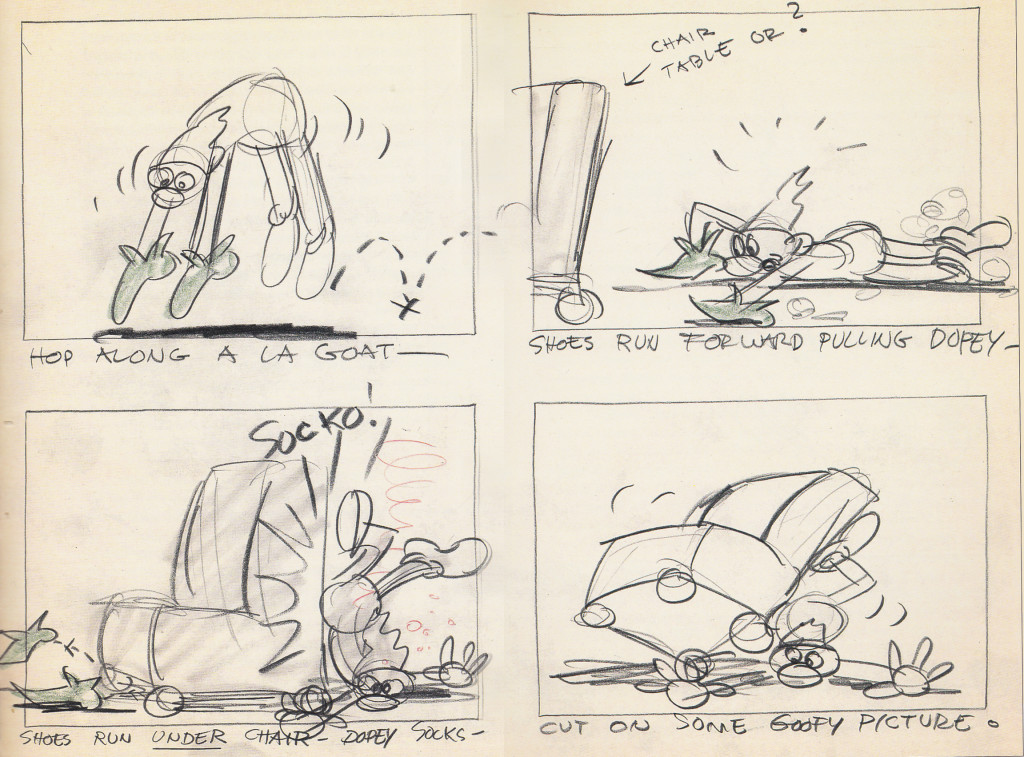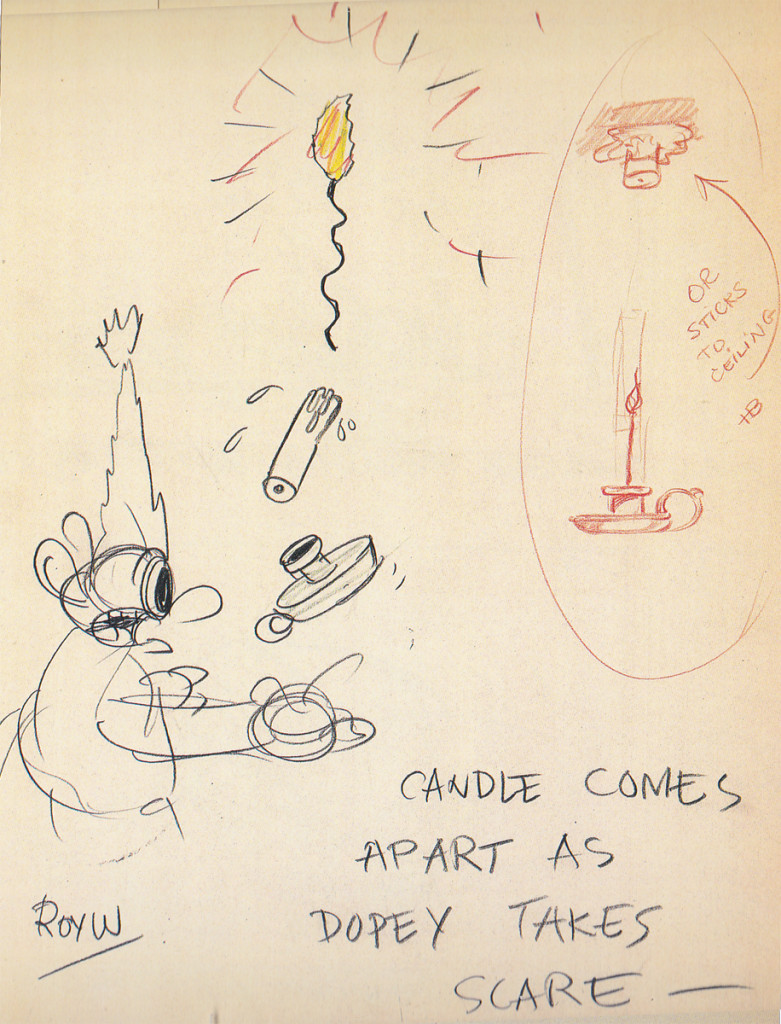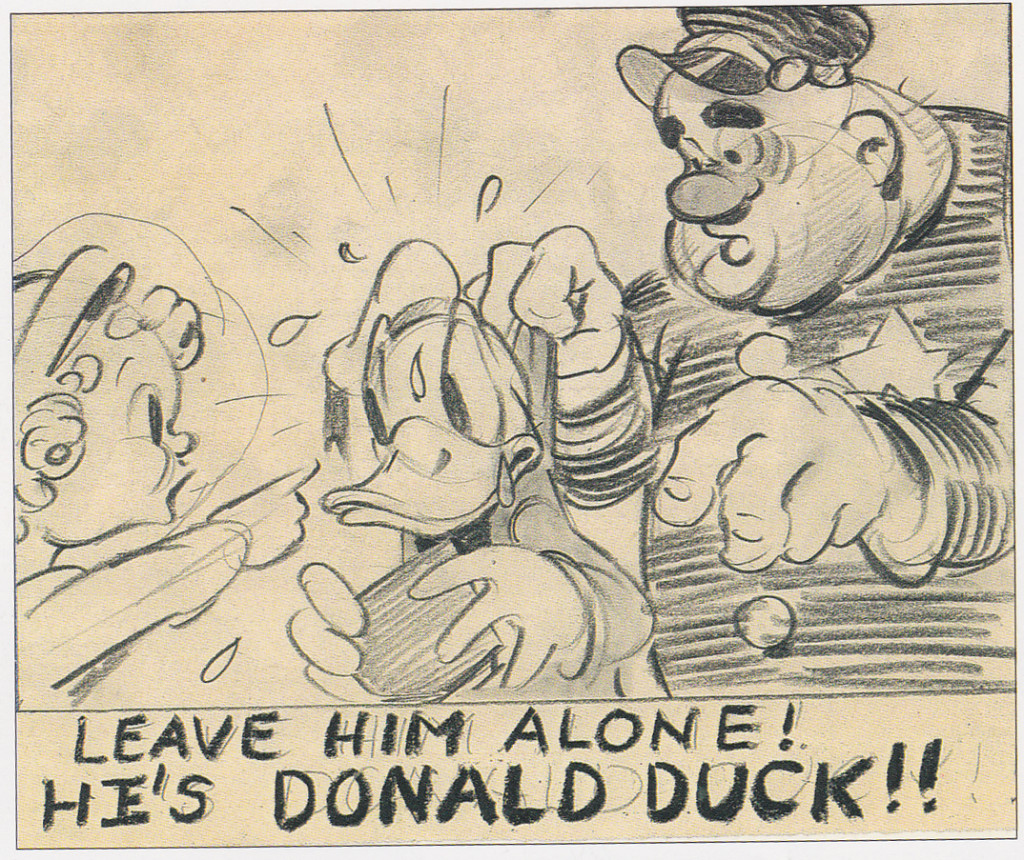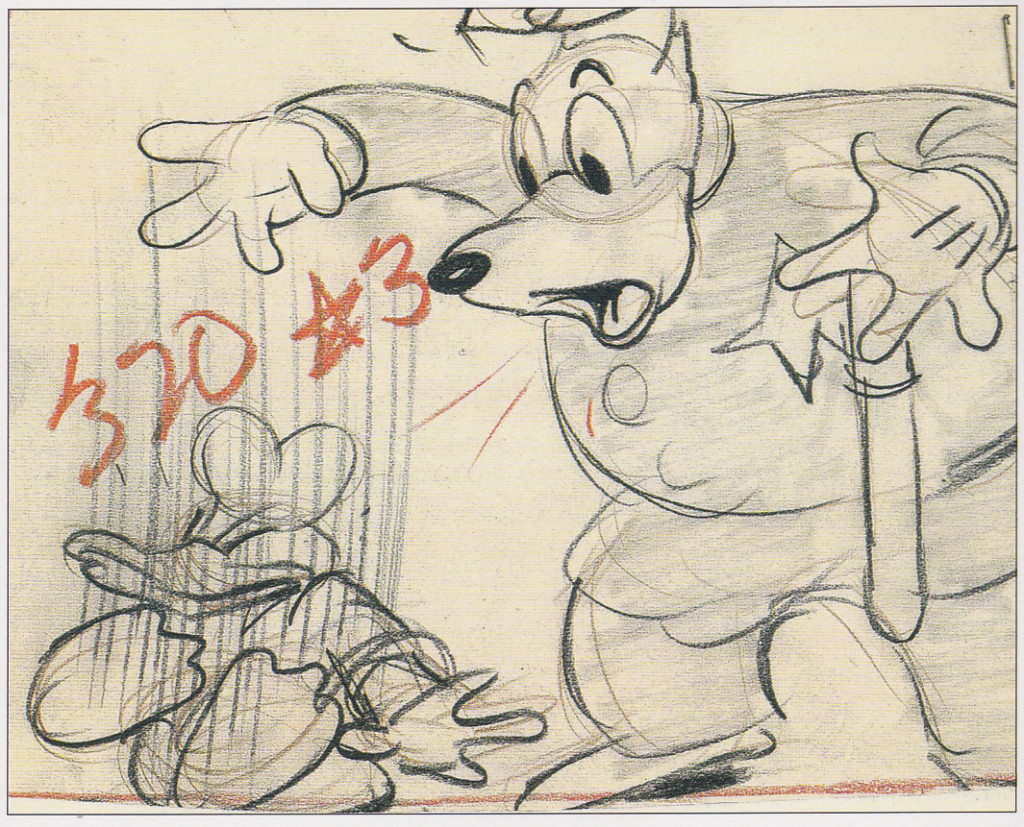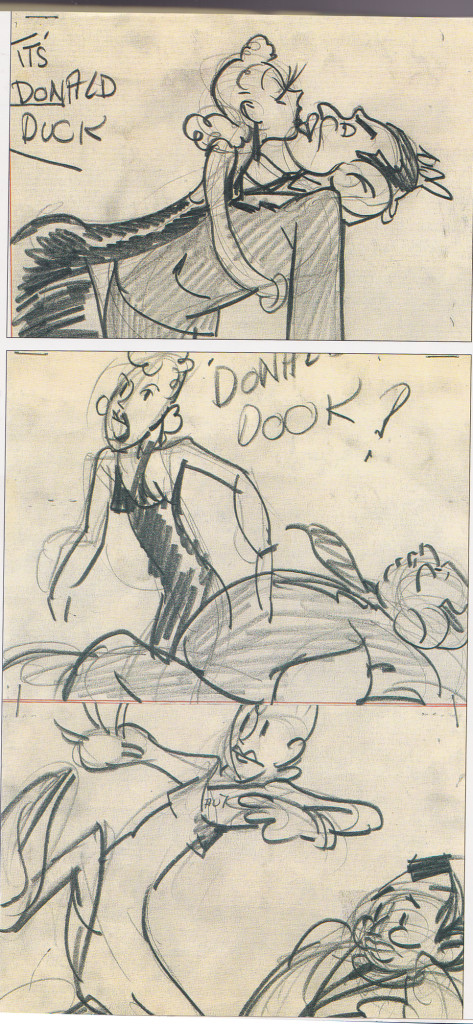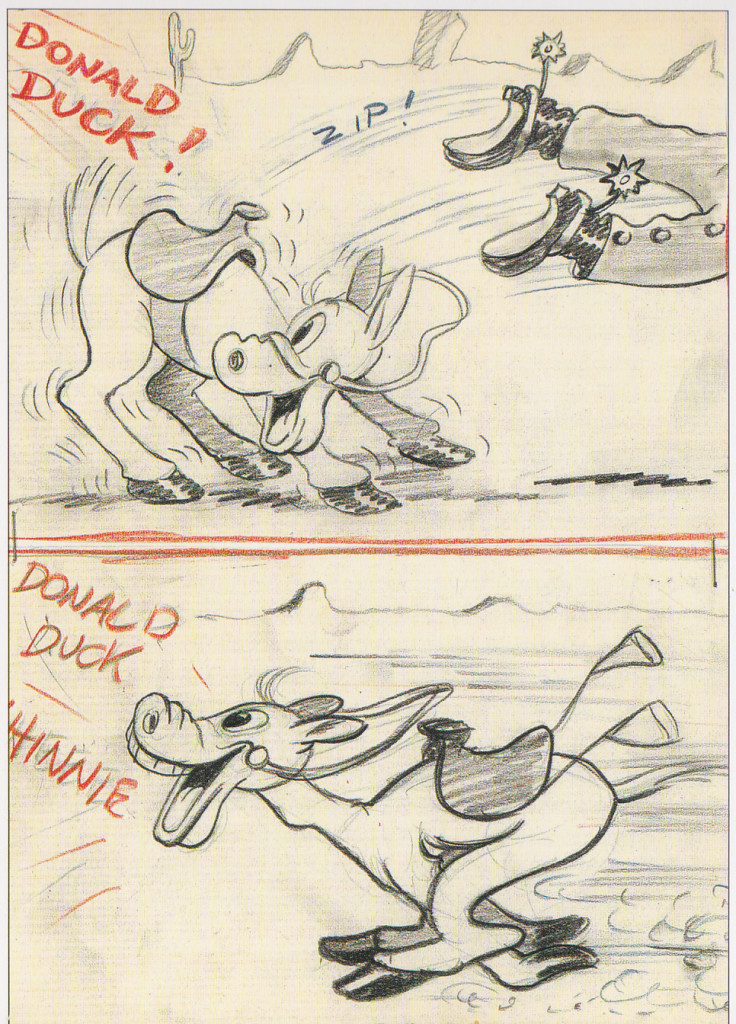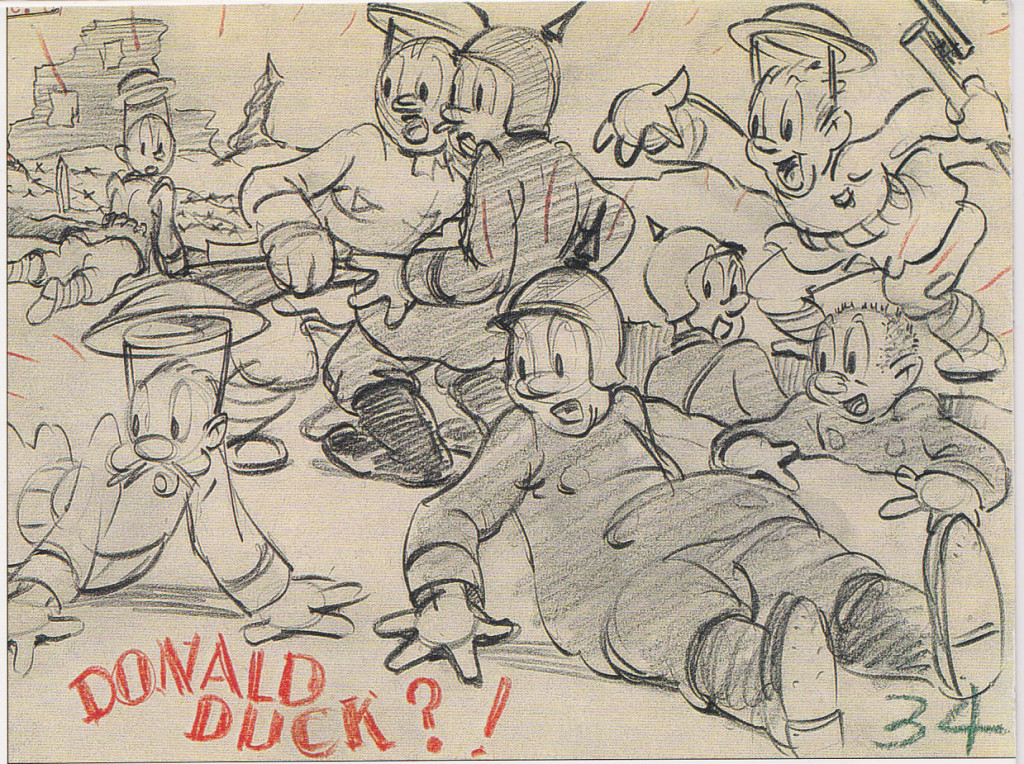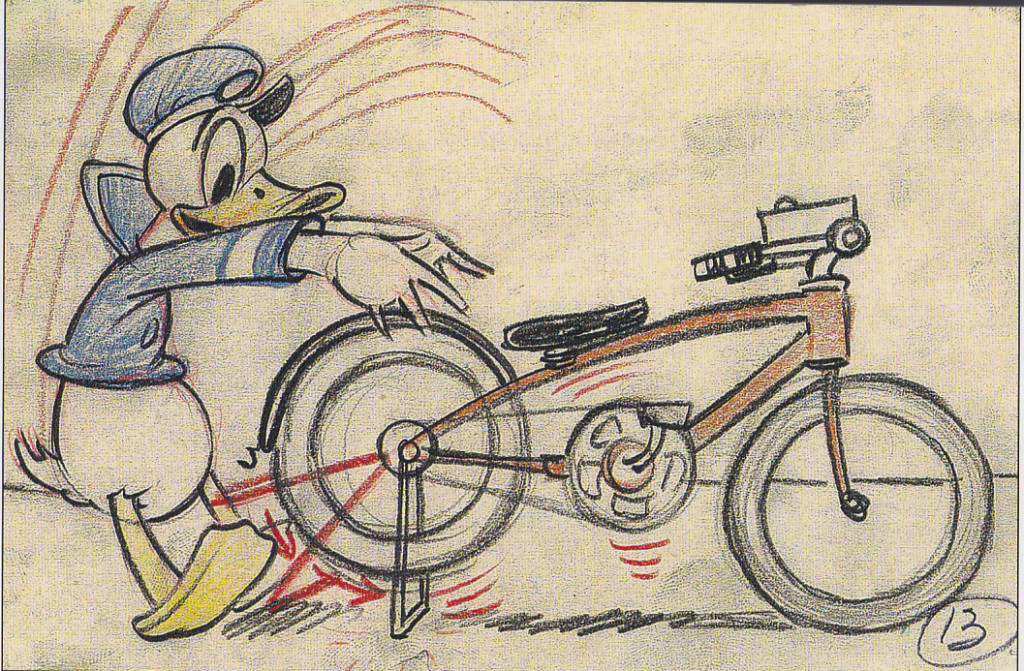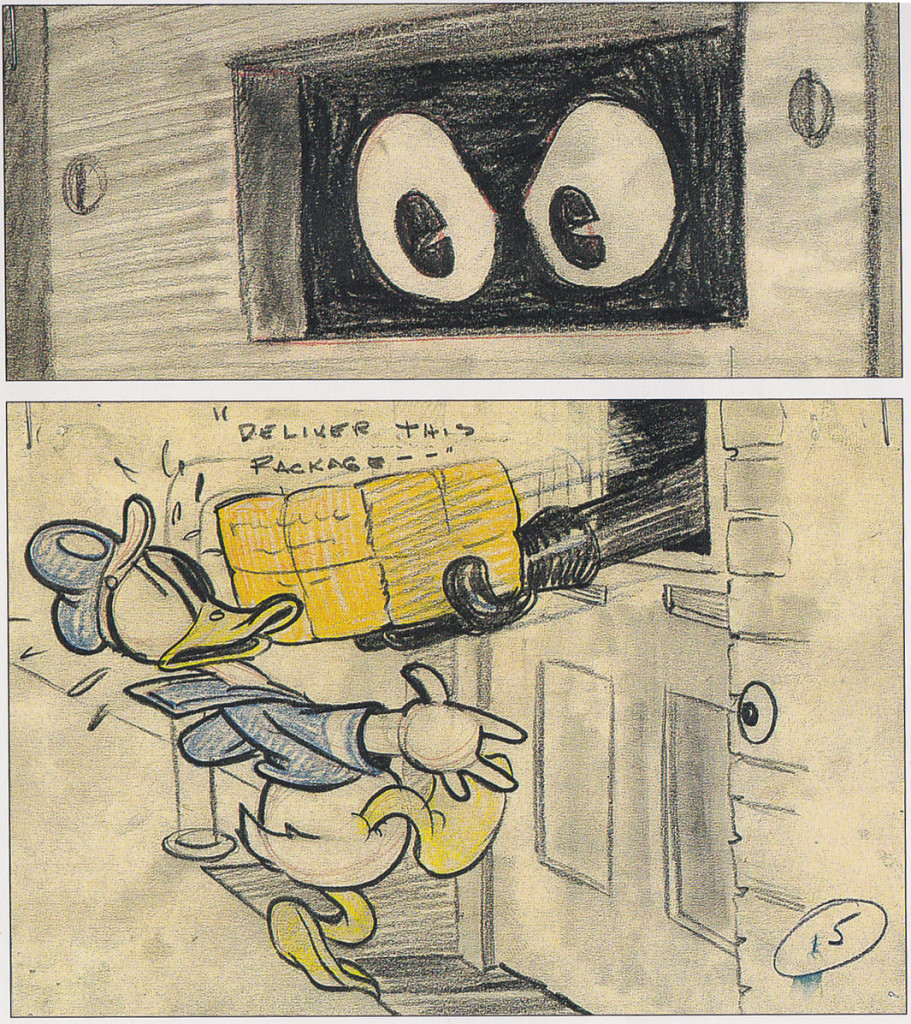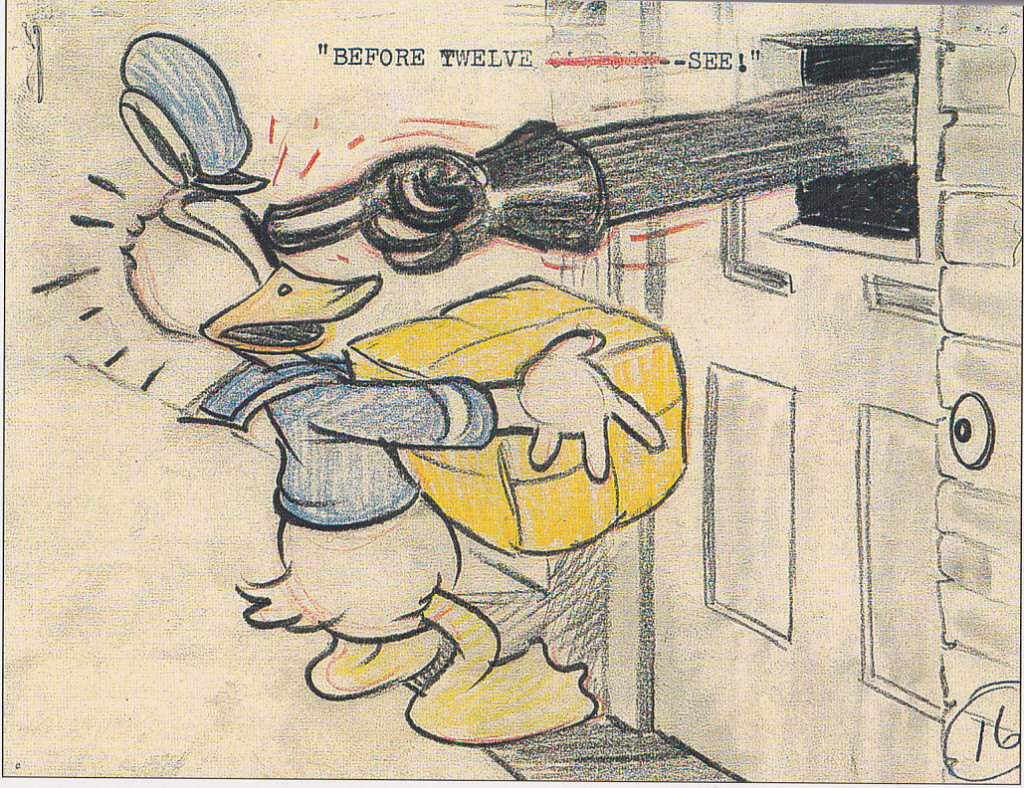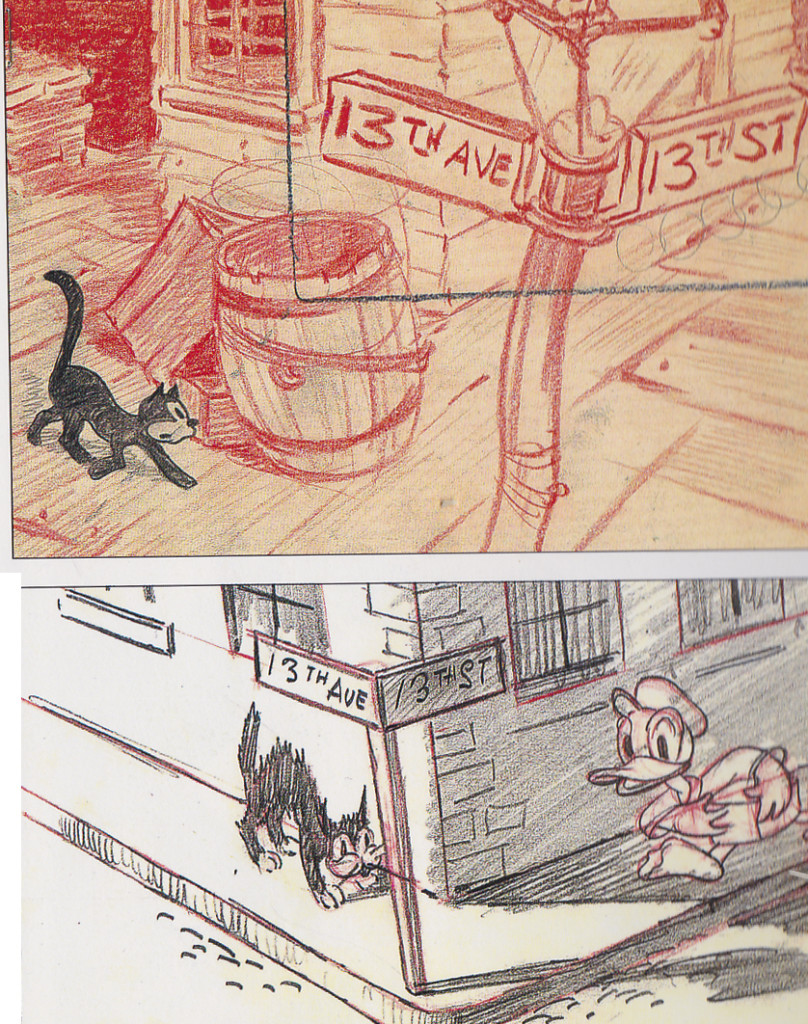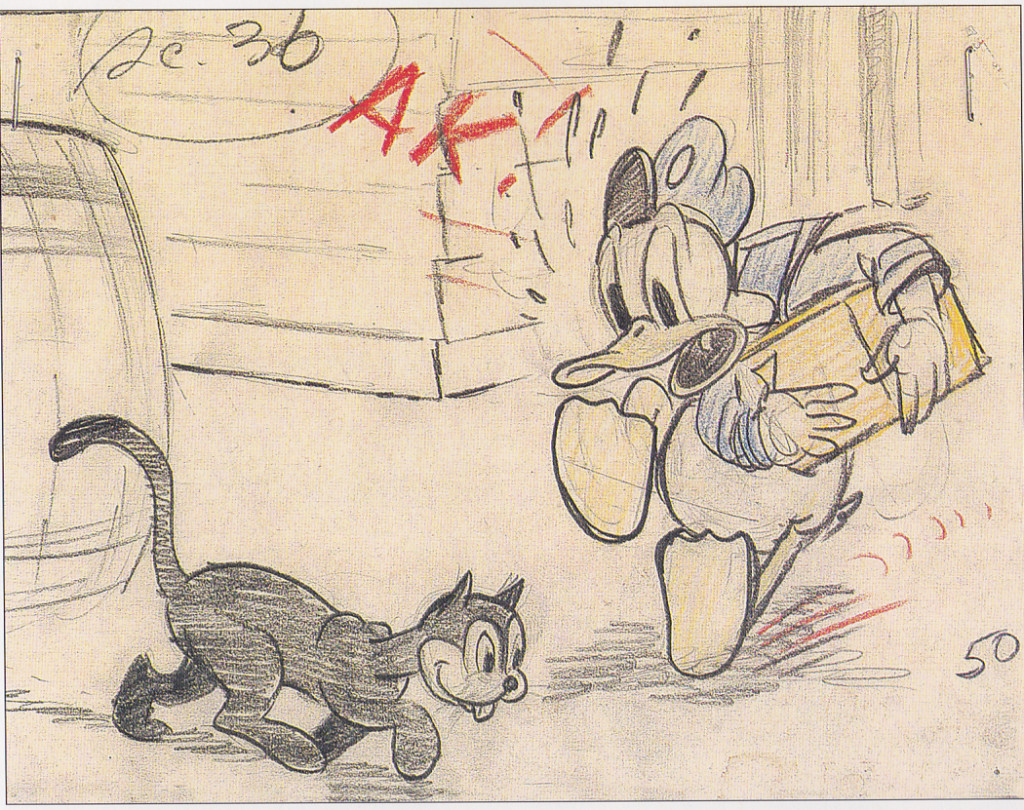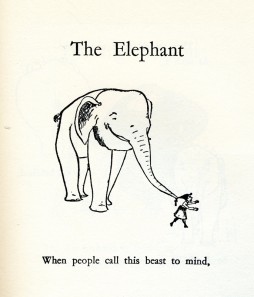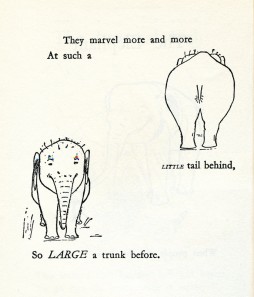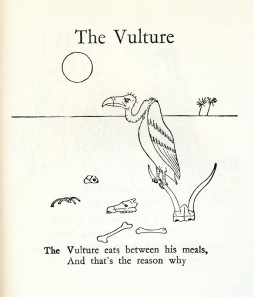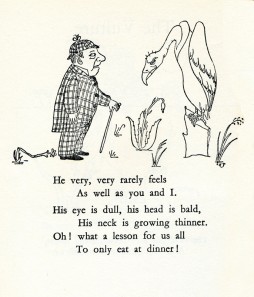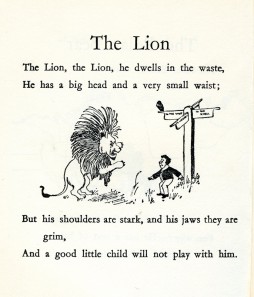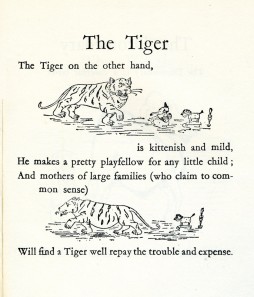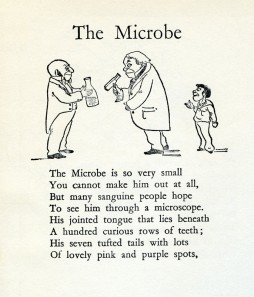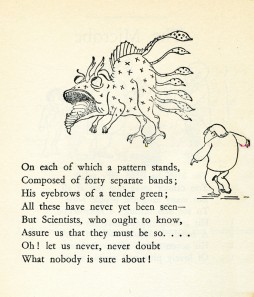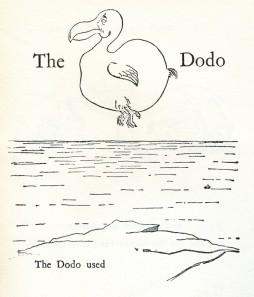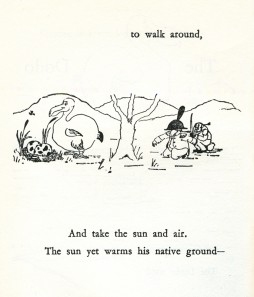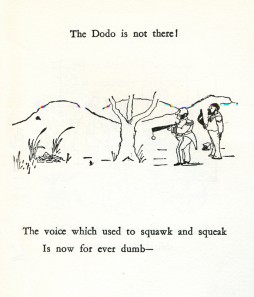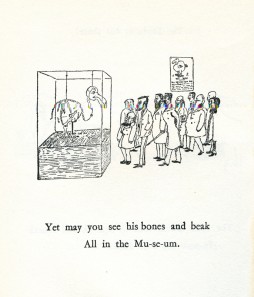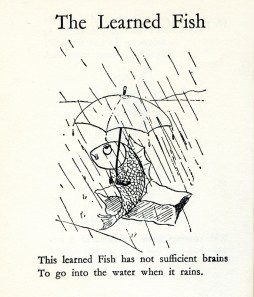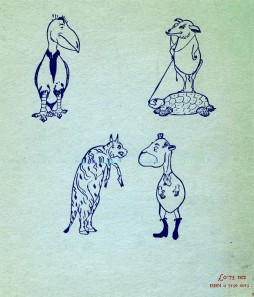Daily post 16 Oct 2013 10:44 pm
Daily post 15 Oct 2013 07:32 am
More from the Land of Alice
Commentary 14 Oct 2013 09:20 am
Give me a good drawing
As animation left thee Thirties proudly moving into the Forties there was a lot to be proud of. In a short period, the animators had moved from stick figures to rubber hoses to fully rounded individuals acting through their pieces. The animation had gotten a bit sentimental (as were many live action pictures of the day), but they handled their tasks well.
The acting had grown full throated and offered more than just the surface performances.
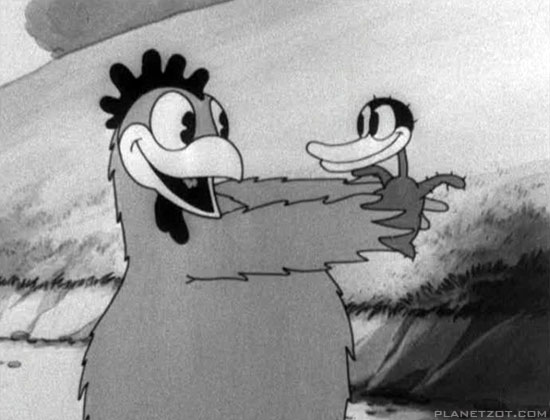
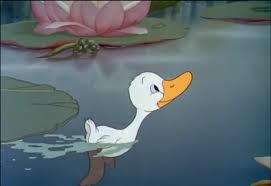
The early version of Disney’s Ugly Duckling and the Later one.
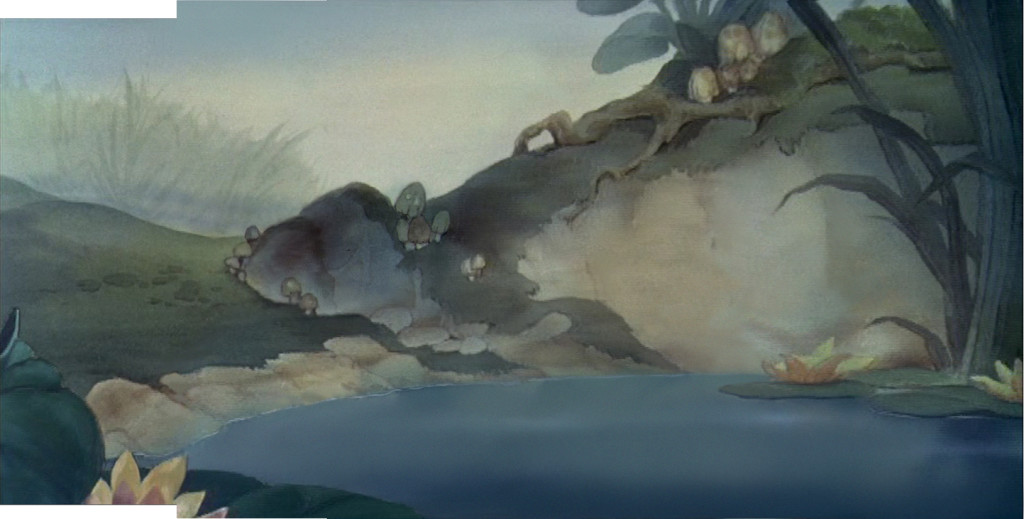
Hans Bacher’s beautiful reconstruction of the BG from the latter film.
Looking at a film like The Old Mill we see rich scenics animated, a film that played against The characterizations of the The Ugly Duckling or Ferdinand the Bull. Warner Bros were starting to slip into their Looney Tunes period as their characters grew smart and zany. This movement was led by Bob Clampett with Tex Avery showing him how to deal out wild paced timing and surrealiztic movement to play for any joke they could get. Disney was straight as an arrow but went for the beauty thing and achieved it as peers competed with each other in the varied studios.
Even Terrytoons were stealing Hollywoods gaga and pulling them off in a somewhat retro manner.
After the Disney strike and the entrance into WWII design and stylization started to grow up. They saw what the Russians had been doing in their attempts to animated the state-run propaganda, ad the art left some inspired, though it was obvious that the animation was living up to their designs.
Some of the animators on the sidelines pushed themselves into the forefront of graphic evolution in animation. Leading the pack in America were the free lanced group working for UPA and the military. The use of strong graphics allowed the aniamtors to get awa with a bit less animation while keeping the films strong. People like Hilberman and Zach Schwartz may have been on the wrong side of Disney’s politics, but they pulled out the stops with their pen and inks.
Films like Hell Bent for Election or A Few Quick Facts About Fear gave the artists the right to move daringl forward with their very strong artwork.
These led Chuck Jones to follow his designers like John McGrew to change the face of the animation. With The Dover Boys of Piemento University all of animation took notice and immediately tried to replicate the work going more and more daring with each film.
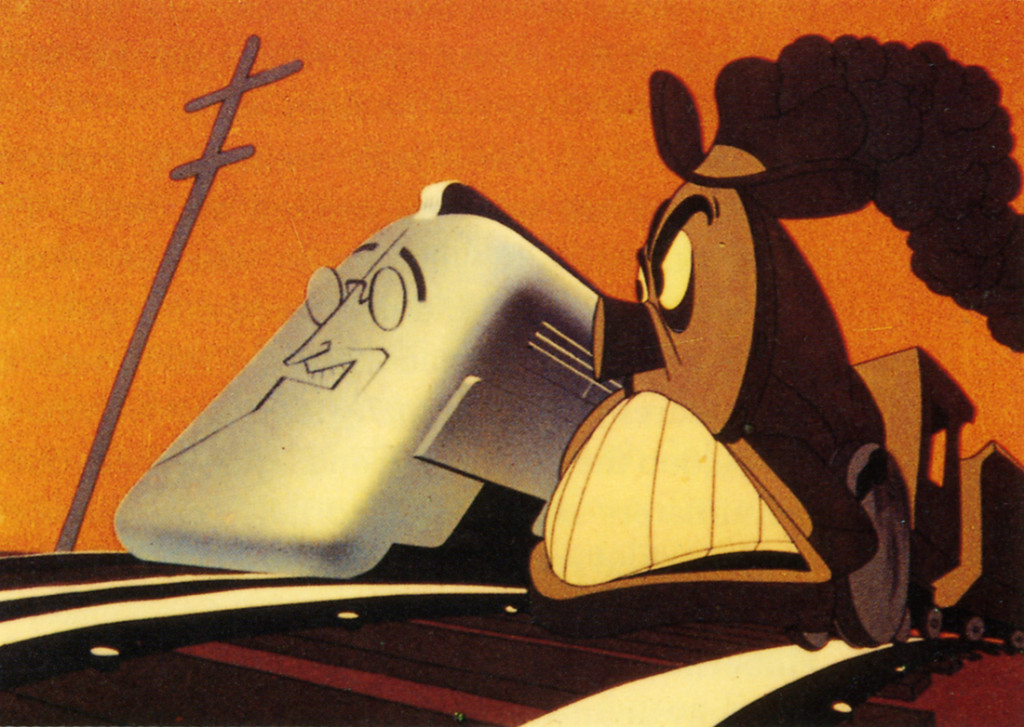
Hell Bent for Election
Immediately after the War, these new graphics returned with the troops as Disney made strong colored works dominated by the likes of Mary Blair and the story structure of Bill Peet. Warner Bros., mostly under the guidance of Chuck Jones brought their abstract art to the BGs with similarly strong painters like Paul Julian leading the way. Under John Hubley at UPA he had not only designed and painted films but also co directed the Oscar nominee The Tell Tale Heart.
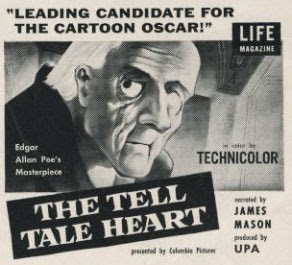
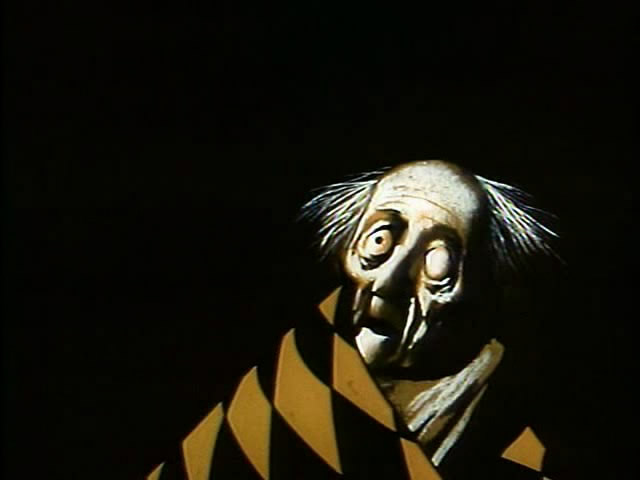
Poster and art for The Tell Tale Heart by Paul Julian at UPA.
Animation went such a distance in a short period of time. From the ball of uncontrolled mass called Oswald the Rabbit, to a rubber hose Mickey & Minnie Mouse to well defined circular characters. It led to more and more sophistication in the scripts and stories with the graphics trying to keep up.
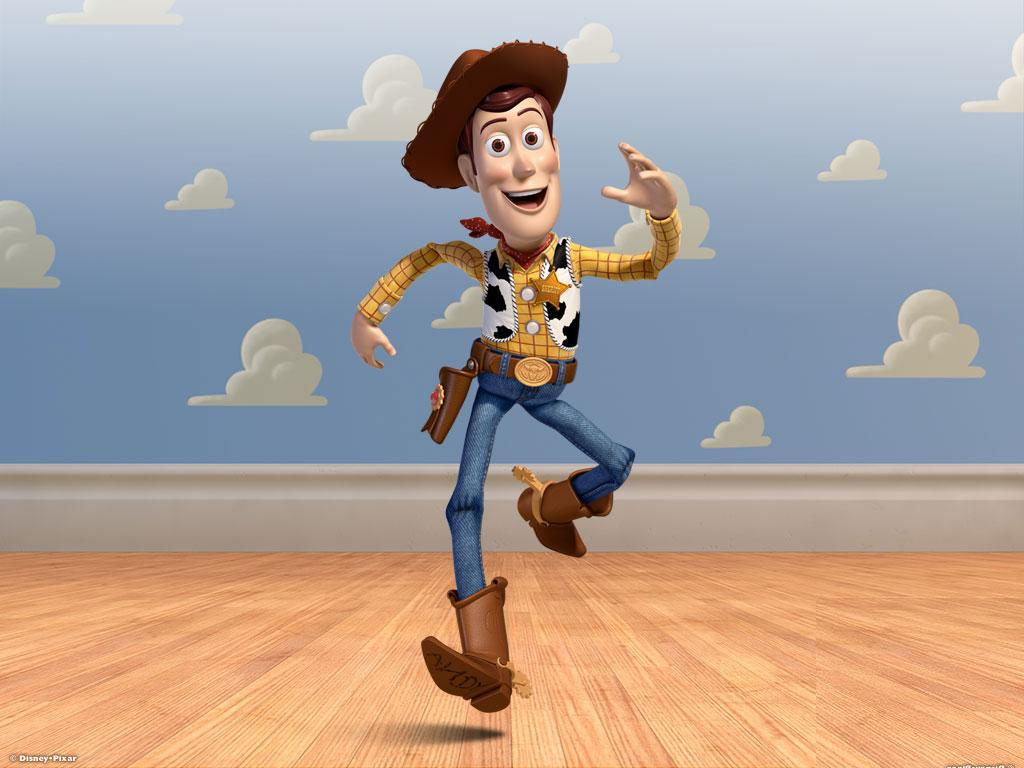 This all ended in 1995 as Toy Story burst onto the screen. The cgi graphics took time to grow up to the sophistication we have today with the likes of Brave or Despicable Me. Seeing the incomparable work in the 2012 Oscar winner, the even more precocious The Life of Pi, gives us pause for thought. We have no idea where animation is going, but for the moment it is definitely not graphically forward. It is difficult to sit by and watch when I have only my meager tools to work with – a pad and pencil. But I continue forward and hope wheat I do will be accepted.
This all ended in 1995 as Toy Story burst onto the screen. The cgi graphics took time to grow up to the sophistication we have today with the likes of Brave or Despicable Me. Seeing the incomparable work in the 2012 Oscar winner, the even more precocious The Life of Pi, gives us pause for thought. We have no idea where animation is going, but for the moment it is definitely not graphically forward. It is difficult to sit by and watch when I have only my meager tools to work with – a pad and pencil. But I continue forward and hope wheat I do will be accepted.
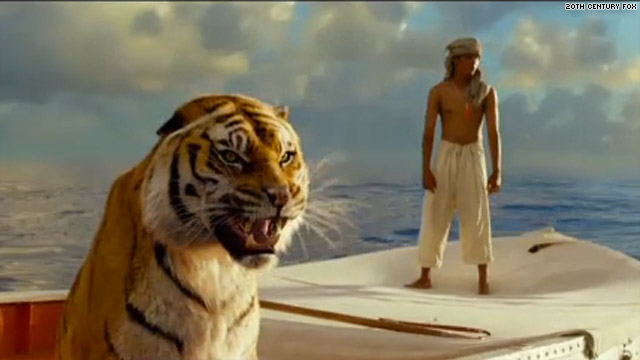
Give me a good drawing. That’s all I ask.
Commentary 13 Oct 2013 11:17 pm
More Good Drawings
Back in the earliest days of animation, the animation workers were pleased just to have something move close to the way they imagined. If a four legged animal actually moved like a four legged animal, they felt thrilled to the nth degree and didn’t worry about much beyond that point; It was basic and fulfilling especially when those basics got them excited.
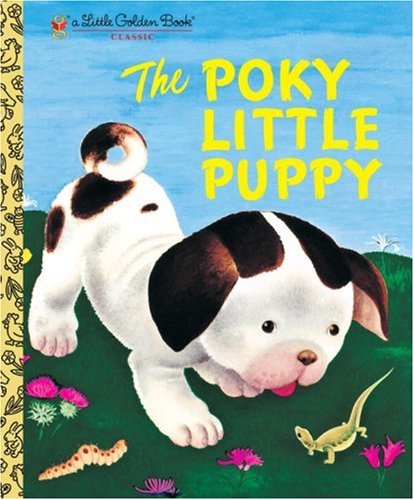 In the earliest days of the Thirties Walt Disney had approached and teamed up with the head of the Chouinard Art Institute in LA., and Disney’s ongoing conversations with art instructor, Don Graham, and his assistant, Phil Dike, al1 about the art form and where it might be heading created high expectations; those Action Analysis Classes, and they sought ways they could help each other. Within a short time Graham had set up a series of classes for extracurricular activities at the studio. The finest of their animators would offer Action Analysis classes were offered after work hours for free, and the studio personnel concentrated on their own improvement as artists. Likewise another set of classes were set up to study the background design and layout of the films. Out of this group came some of animations’ most important designers and stylization artists: Ken Andersen, Phil Dike, Tee Hee. The Disney studio hired a number of great European illustrators just to do inspirational work which would help hem build models for the early features (Snow White, Pinocchio) and some of the Silly Symphonies. People like Albert Hurter and Gustaf Tenggren (who continued to make a living in the States doing illustrations for Little Golden Books. Gaining fame for the The Poky Little Puppy, his largest creation.
In the earliest days of the Thirties Walt Disney had approached and teamed up with the head of the Chouinard Art Institute in LA., and Disney’s ongoing conversations with art instructor, Don Graham, and his assistant, Phil Dike, al1 about the art form and where it might be heading created high expectations; those Action Analysis Classes, and they sought ways they could help each other. Within a short time Graham had set up a series of classes for extracurricular activities at the studio. The finest of their animators would offer Action Analysis classes were offered after work hours for free, and the studio personnel concentrated on their own improvement as artists. Likewise another set of classes were set up to study the background design and layout of the films. Out of this group came some of animations’ most important designers and stylization artists: Ken Andersen, Phil Dike, Tee Hee. The Disney studio hired a number of great European illustrators just to do inspirational work which would help hem build models for the early features (Snow White, Pinocchio) and some of the Silly Symphonies. People like Albert Hurter and Gustaf Tenggren (who continued to make a living in the States doing illustrations for Little Golden Books. Gaining fame for the The Poky Little Puppy, his largest creation.
Back in the earliest days of animation, the animation workers were pleased just to have something move close to the way they imagined. If a four legged animal actually moved like a four legged animal, they felt thrilled to the nth degree and didn’t worry about much beyond that point; It was basic and fulfilling especially when those basics got them excited.
 In the earliest days of the Thirties Walt Disney had approached and teamed up with the head of the Chouinard Art Institute in LA., and Disney’s ongoing conversations with art instructor, Don Graham, and his assistant, Phil Dike, al1 about the art form and where it might be heading created high expectations; those Action Analysis Classes, and they sought ways they could help each other. Within a short time Graham had set up a series of classes for extracurricular activities at the studio. The finest of their animators would offer Action Analysis classes were offered after work hours for free, and the studio personnel concentrated on their own improvement as artists. Likewise another set of classes were set up to study the background design and layout of the films. Out of this group came some of animations’ most important designers and stylization artists: Ken Andersen, Phil Dike, Tee Hee. The Disney studio hired a number of great European illustrators just to do inspirational work which would help hem build models for the early features (Snow White, Pinocchio) and some of the Silly Symphonies. People like Albert Hurter and Gustaf Tenggren (who continued to make a living in the States doing illustrations for Little Golden Books. Gaining fame for the The Poky Little Puppy, his largest creation.
In the earliest days of the Thirties Walt Disney had approached and teamed up with the head of the Chouinard Art Institute in LA., and Disney’s ongoing conversations with art instructor, Don Graham, and his assistant, Phil Dike, al1 about the art form and where it might be heading created high expectations; those Action Analysis Classes, and they sought ways they could help each other. Within a short time Graham had set up a series of classes for extracurricular activities at the studio. The finest of their animators would offer Action Analysis classes were offered after work hours for free, and the studio personnel concentrated on their own improvement as artists. Likewise another set of classes were set up to study the background design and layout of the films. Out of this group came some of animations’ most important designers and stylization artists: Ken Andersen, Phil Dike, Tee Hee. The Disney studio hired a number of great European illustrators just to do inspirational work which would help hem build models for the early features (Snow White, Pinocchio) and some of the Silly Symphonies. People like Albert Hurter and Gustaf Tenggren (who continued to make a living in the States doing illustrations for Little Golden Books. Gaining fame for the The Poky Little Puppy, his largest creation.
Commentary &Layout & Design 13 Oct 2013 08:17 am
Just Give Me A Good Drawing
I want to write a couple of pieces about design and stylization in animation. This will start us off.
As animation left the Thirties, proudly moving into the Forties there was a lot to be proud of. In a short period, the animators had moved from stick figures to rubber hoses to fully rounded individuals acting through their pieces. The animation had gotten a bit sentimental (as were many live action pictures of the day), but they handled their tasks well.
The acting had grown full throated and offered more than just the surface performances.


The early version of Disney’s Ugly Duckling and the Later one.

Hans Bacher’s beautiful reconstruction of the BG from the latter film.
Looking at a film like The Old Mill we see rich scenics animated, a film that played against The characterizations of the The Ugly Duckling or Ferdinand the Bull. Warner Bros were starting to slip into their Looney Tunes period as their characters grew smart and zany. This movement was led by Bob Clampett with Tex Avery showing him how to deal out wild paced timing and surrealistic movement to play for any joke they could get. Disney was straight as an arrow but went for the beauty thing and achieved it as peers competed with each other in the varied studios.
Even Terrytoons were stealing Hollywood’s gags and pulling them off in a somewhat retro manner.
After the Disney strike and the entrance into WWII design and stylization started to grow up. They saw what the Russians had been doing in their attempts to animated the state-run propaganda, ad the art left some inspired, though it was obvious that the animation was living up to their designs.
Some of the animators on the sidelines pushed themselves into the forefront of graphic evolution in animation. Leading the pack in America were the free lanced group working for UPA and the military. The use of strong graphics allowed the animators to get awa with a bit less animation while keeping the films strong. People like Hilberman and Zach Schwartz may have been on the wrong side of Disney’s politics, but they pulled out the stops with their pen and inks.
Films like Hell Bent for Election or A Few Quick Facts About Fear gave the artists the right to move daringly forward with their very strong artwork.
These led Chuck Jones to follow his designers like John McGrew to change the face of the animation. With The Dover Boys of Piemento University all of animation took notice and immediately tried to replicate the work going more and more daring with each film.

Hell Bent for Election
Immediately after the War, these new graphics returned with the troops as Disney made strong colored works dominated by the likes of Mary Blair and the story structure of Bill Peet. Warner Bros., mostly under the guidance of Chuck Jones brought their abstract art to the BGs with similarly strong painters like Paul Julian leading the way. Under John Hubley at UPA he had not only designed and painted films but also co directed the Oscar nominee The Tell Tale Heart.


Poster and art for The Tell Tale Heart by Paul Julian at UPA.
Animation went such a distance in a short period of time. From the ball of uncontrolled mass called Oswald the Rabbit, to a rubber hose Mickey & Minnie Mouse to well defined circular characters. It led to more and more sophistication in the scripts and stories with the graphics trying to keep up.
 This all ended in 1995 as Toy Story burst onto the screen. The cgi graphics took time to grow up to the sophistication we have today with the likes of Brave or Despicable Me. Seeing the incomparable work in the 2012 Oscar winner, the even more precocious The Life of Pi, gives us pause for thought. We have no idea where animation is going, but for the moment it is definitely not graphically forward. It is difficult to sit by and watch when I have only my meager tools to work with – a pad and pencil. But I continue forward and hope what I do will be accepted.
This all ended in 1995 as Toy Story burst onto the screen. The cgi graphics took time to grow up to the sophistication we have today with the likes of Brave or Despicable Me. Seeing the incomparable work in the 2012 Oscar winner, the even more precocious The Life of Pi, gives us pause for thought. We have no idea where animation is going, but for the moment it is definitely not graphically forward. It is difficult to sit by and watch when I have only my meager tools to work with – a pad and pencil. But I continue forward and hope what I do will be accepted.

Give me a good drawing. That’s all I ask.
Commentary 12 Oct 2013 07:23 am
Getting to Know the New
Working with all this animation history, particularly the beautiful work that came out of the 30′s thru 50′s, I am so often in awe and deep in admiration for the work that was done. Even if it’s not the kind of art I love, it still overpowers me so often.
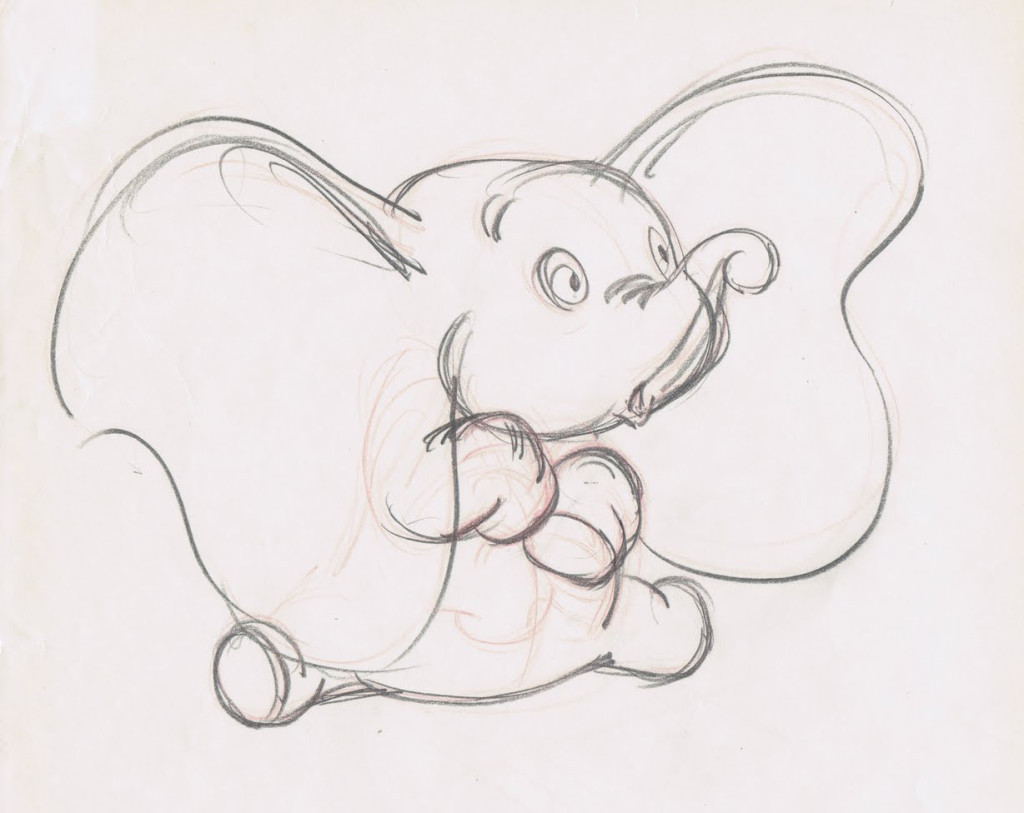 I mean let’s look at the amazing scene Alex Lovy did for the Woody Woodpecker cartoon, Ace In the Hole. Now Lovy was a good solid animator, not a Frank Thomas or a Bill Tytla. But he did good work, good solid animation.
I mean let’s look at the amazing scene Alex Lovy did for the Woody Woodpecker cartoon, Ace In the Hole. Now Lovy was a good solid animator, not a Frank Thomas or a Bill Tytla. But he did good work, good solid animation.
There were so many like him, so many strong animators with great personalities to animate. And all of his work is worth studying. Now we’re onto the cg animators. And it’s virtually impossible to study their work. Maybe four or five people get credit for a scene. It’s impossible to discern who deserves the signature. We don’t know how many were involved, nevermind what work they actually did. And what if the opposite were true – only one of the animators was great and (s)he carried a number of mediocre talents? There’s a good liklihood that that does happen. How can we tell?
We know that when Frank Thomas animated one of those great scenes he did in the fifties (like  Captain Hook sword-fighting while worrying about that ticking clock growling louder in the background), or the squirrel sequence he did in Sword in the Stone. We know he animated it and didn’t have help from another Master animator like John Lounsberry. No, the entire sequence was his, except for one or two scenes who can be easily tracked down and credited. We talked about this dilemma before.
Captain Hook sword-fighting while worrying about that ticking clock growling louder in the background), or the squirrel sequence he did in Sword in the Stone. We know he animated it and didn’t have help from another Master animator like John Lounsberry. No, the entire sequence was his, except for one or two scenes who can be easily tracked down and credited. We talked about this dilemma before.
Tom Sito just wrote a history of computer animation called Moving Innovation: A History of Computer Animation. I haven’t read it yet, though I look forward to doing so. Perhaps this is the first flicker of possibility that some animators out there will gain printed recognition for their work; it’s the first indication that maybe some of those artists will be heard from. I can only hope and I won’t qit until I do start getting that word back.
Anyone out there know of any specific scenes they want to call out, please do so. Use the comments page.
Books &Commentary 11 Oct 2013 06:40 am
The Writer, the man and Evermore
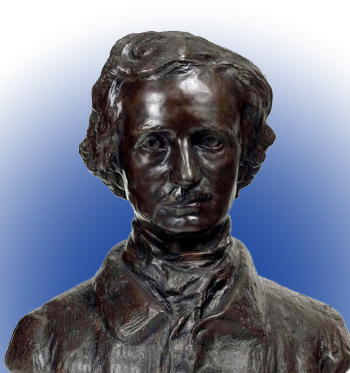 The Writer, the Man and Evermore; this is the subtitle given to Charles McGrath‘s recent article about the newly opened, exhibit celebrating the work of author Edgar Allan Poe. Having written a bit about this yesterday, I decided to go further. Of course I am excited by this news, having worked on Poe’s biography these past six years, with the purpose of creating a low budget animated feature. Poe led a very difficult life, completely impoverished, with almost all the women in his lifetime dying during on him – his wife, much younger than he, died of Tuberculosis. His mother also died of TB when Poe was just 3 yrs old. He was left an orphan of the State and was given to Thomas Allan and wife as surrogate parents. They abandoned Poe during his college years and he spent much of the rest of his life searching for funds to write. He lived with his aunt and married his cousin 27 years his younger. It was assumed they were more a brother-sister relationship rather than husband-wife. Since all three were inches away from pure penury, it made sense for them to live together with his acting as the family support. And, indeed, it was much of the writing that did give them financial aid. Several times he attempted to start a literary magazine, but was more often likely to be writing for one. Graham’s Reader was one such paper for which he wrote some strong material, including The Murders in the Rue Morgue.
The Writer, the Man and Evermore; this is the subtitle given to Charles McGrath‘s recent article about the newly opened, exhibit celebrating the work of author Edgar Allan Poe. Having written a bit about this yesterday, I decided to go further. Of course I am excited by this news, having worked on Poe’s biography these past six years, with the purpose of creating a low budget animated feature. Poe led a very difficult life, completely impoverished, with almost all the women in his lifetime dying during on him – his wife, much younger than he, died of Tuberculosis. His mother also died of TB when Poe was just 3 yrs old. He was left an orphan of the State and was given to Thomas Allan and wife as surrogate parents. They abandoned Poe during his college years and he spent much of the rest of his life searching for funds to write. He lived with his aunt and married his cousin 27 years his younger. It was assumed they were more a brother-sister relationship rather than husband-wife. Since all three were inches away from pure penury, it made sense for them to live together with his acting as the family support. And, indeed, it was much of the writing that did give them financial aid. Several times he attempted to start a literary magazine, but was more often likely to be writing for one. Graham’s Reader was one such paper for which he wrote some strong material, including The Murders in the Rue Morgue.
Presumably, according to Mr. McGrath a lot of manuscripts, letters, and the life are on display. Given the extensive work that several other organizations have done, it’s helpful to have this material preserved for public consumption. (I keep promising to get myself to the Poe House up in the Bronx but I’ve missed that train for too often to not feel the guilt of my actions.) We have in the script for the feature a short sequence wherein two well know ladies – friends of the Poes – visit. They play some sort of early football in the yard only to end when Edgar’s shoe completely dissolves after smashing the ball. Since he had no other shoes, the guests chipped in to buy him a new pair.
Please, don’t mind me. I’ve gotten so addicted to Edgar Allan Poe’s work that I have a hard time not talking about it. I thnk, in some ways, I see a lot of similarities in our lives. That money thing was always the patch blocking the middle of the road. I need a lot more than he did to get my “art” going, but in the end it ma as well be the same thing.
I also recognize that unwittingly I have the same sense of arrogance about mine own artform. I so fussy about wanting what I want that I can be hard to put up with after screenings. I’ll tell you after seeing “Tangled” I was hard to live with. I hated the film and was upset with all those who’d worked on it. It was stupid; I’d seen a lot worse and even enjoyed a lot worse. I just couldn’t deal with those lead characters and, though I liked the horse, I couldn’t help but see Prince Phillip’s horse (Milt Kahl’s character in Sleeping Beauty) in cg. It just never made the grade for me.
Boy, am I looking forward to the day when I can give my full support to that POE film. It really will be some kind of adult film, but today, I can only visit the art exhibit planted so nearby my own home. Even that’s a pricey affair, so getting in to see it will take some financial maneuvering. But I wouldn’t miss it.
Commentary 10 Oct 2013 03:18 am
The Inner Oblong in the 19th Century
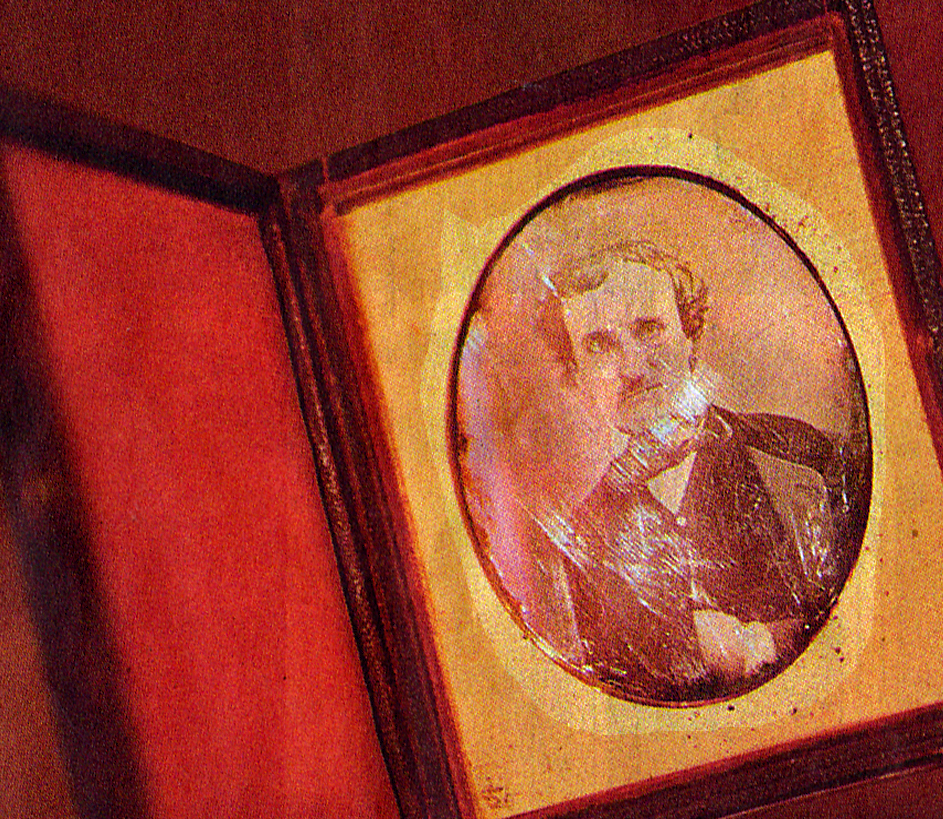
GLASSWERKS, The Writer and Man, Evemore is a useful commentary abut the author and plagiarism in the 19th Century. He writes fitfully of living again. It must have been difficult to create while all those around the author created their versions of his dreams. All right, after all it is a tall order to put all of the pieces back together again. Little girls are complicated – as are all little boys. The King’s objects would have been as complex as the work of fiction; those little boys and little girls and flowers, if you will.
I have been working on an animated bio of POE‘s life and find it more and, ever more, so dense. Mind you, I’m involved more in the bio than the stories (though some of the stories are of an integral nature to the biographies)
I stupidly should have tried researching there to start with, and I’ll go to the short tales the next moment I can attend. I see all there in front of me. What a fool I can be; I found all of the material independent of the rest and forced it like a giant jigsaw into the whole I have.
Edgar Allan Poe: Terror of the soul
Runs through January 26th at the Morgan Library Museum
25 Madison Avenue
(2120 749 6g00/Morgan Library and Museum
This is a major display at the Morgan Library and know I’ll have plenty of time to absorb all the in formation they’ll offer. I’ll have my weekend’s work cut out for me.
Animation Artifacts &Books &John Canemaker 08 Oct 2013 02:17 pm
a Coupla Board Gag-stas
Aside from formulating the inventors of the storyboard for animation, the Disney studio had some amazing talent in their group of “funnymen.” Most of the “gag writers” that took over the animation industry, came 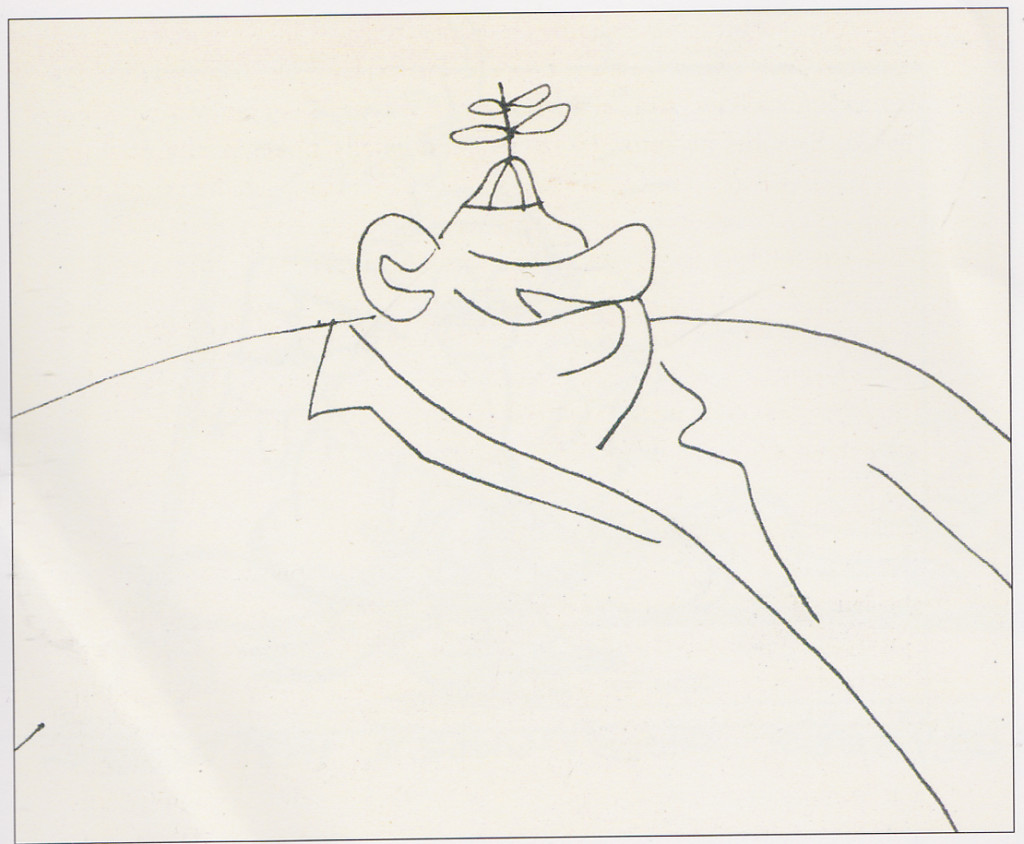 fresh from the Disney Bros. studio. You can start with Dick Huemer who virtually invented the form. There was Tedd Pierce who brought his own style and a rich sense of humor. Between him and Bill Peet there were a wild row of styles and intelligence from the Urbane to the Hayseed.
fresh from the Disney Bros. studio. You can start with Dick Huemer who virtually invented the form. There was Tedd Pierce who brought his own style and a rich sense of humor. Between him and Bill Peet there were a wild row of styles and intelligence from the Urbane to the Hayseed.
Here I’d like to show two of the richest and most colorful artists.
First we have one of the better “dwarf” writers – Roy Williams, Many of us know him as the oversized and goofy “Mousketeer,” Uncle Roy. This is a small piece done for Snow White, trying to get a gag out while giving some personality to Dopey.
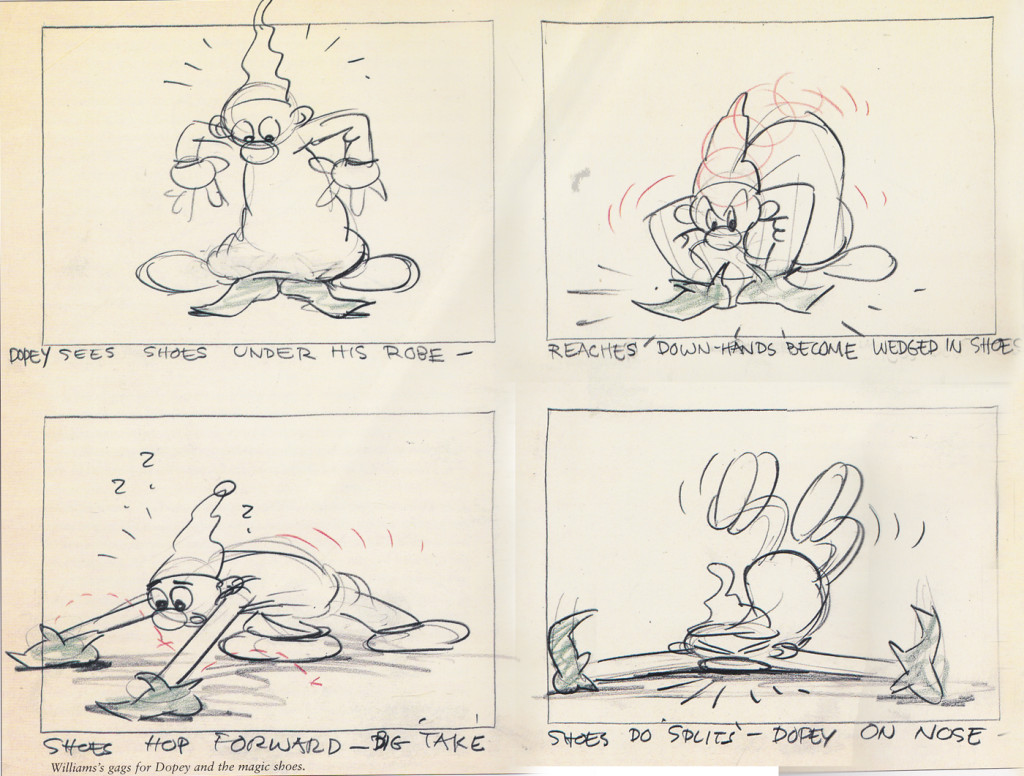 1
1
From “Unca Roy,” we can go to one of the most identifiable artists from the studio. Just take a look at the last two images posted here. If you don’t recognize the gag as one from the pen of foremost Donald cartoonist, Carl Barks. If not for some of the gags, here, the drawing style is dead giveaway. One can only sit back gawking at how great it is.
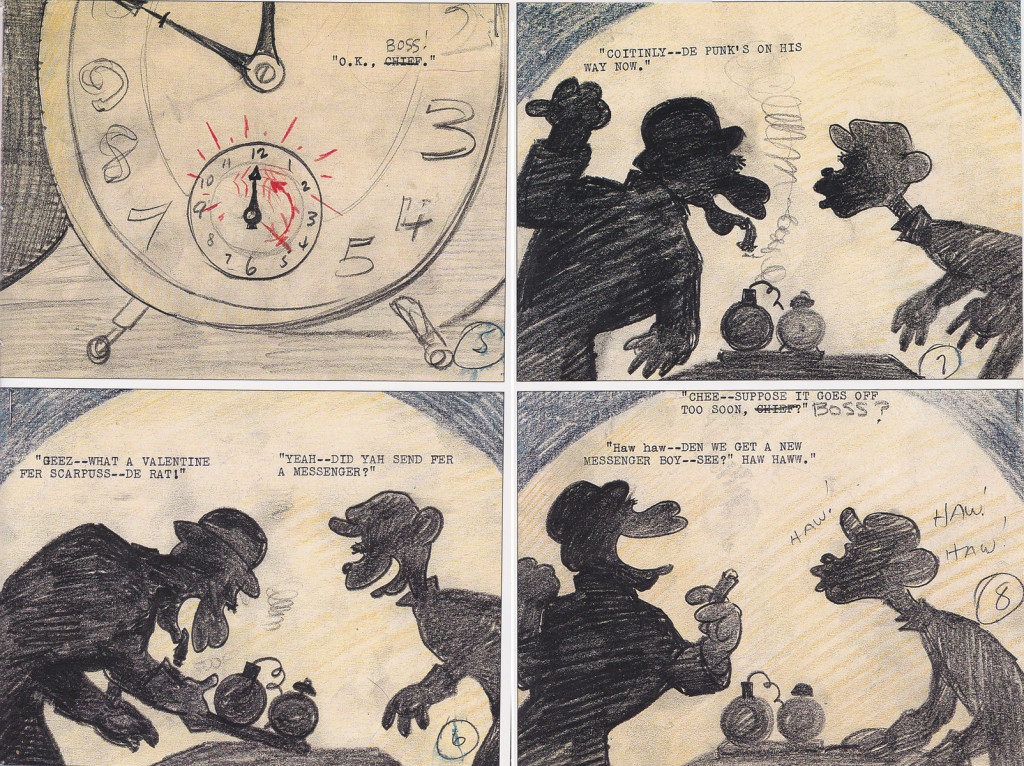
I will show off the work of a couple more of these great artists before I’m done. They keep me laughing all the while admiring them.
All material thanks to John Canemaker whose brilliant book, Paper Dreams, supplied just about everything for this post.
Daily post 08 Oct 2013 07:22 am
Belloc’s Bestiary
“But Only God can make a tree.” when I was a little kid those lines hit me hard. It took a while before I read anything else by Hillaire Belloc, but I was hooked once I did. Here’s a post dedcated to his writing.
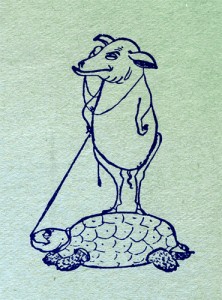 - I have two books of chilldren’s verse written by Hilaire Belloc. I’ve been a fan of these poems and have prized the books. I thought it worth sharing.
- I have two books of chilldren’s verse written by Hilaire Belloc. I’ve been a fan of these poems and have prized the books. I thought it worth sharing.
After graduating from Oxford, Hilaire Belloc served in Parliament. After two terms, thoroughly disatisfied with public office, he left the House of Commons. He wrote extensive commentaries during the first World War. His first son was killed in that conflict; his second son during the second World War.
He was a very opinionated political writer, which didn’t help his reputation during his life. He also refused to be pigeon-holed writing in many different styles and forms. Hence he was barely accepted by the cogniscenti of the time. Many of his children’s poems are whimsical but quite dark. Victoriana lives on in his mood and attitude. His poems are all on line (none of the illustrations are there).
B.T.B. was properly named Basil Templeton Blackwood, the third son of the Marquess of Dufferin. He met Belloc when they were both students at Oxford. He became a Lieutenant in the Grenadier Guards in WW I and was killed in action in 1917.
Blackwood became a solicitor, but he illustrated several of Belloc’s books. These include:
The Bad Child’s Book of Beasts (1896)
More Beasts (1897)
The Modern Traveller (1898)
A Moral Alphabet (1899)
Cautionary Tales for Children (1907)
More Peers (1911).
Here we have selected pages from the first two of these books which were combined into one volume I own. It was last published by Duckworth in 1971. A “Bestiary”, of course, is an alphabetical listing of animal poems originally designed to teach children the alphabet. (Sorry that I post these pages out of alphabetical order.)
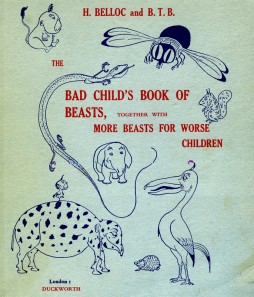 _
_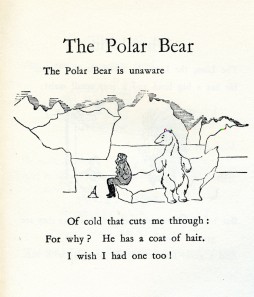
______(Click any image to enlarge.)
